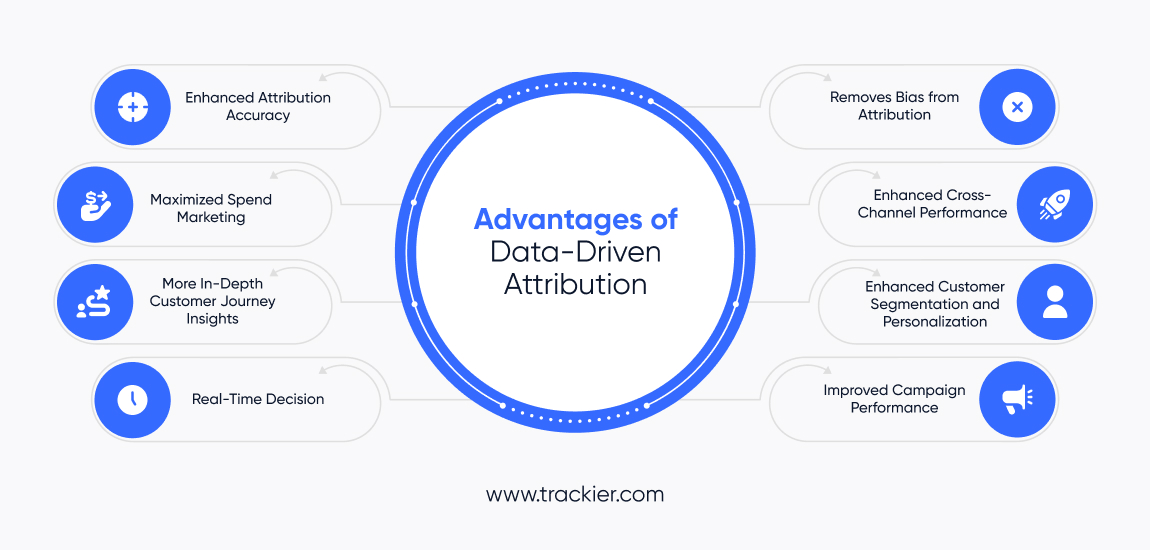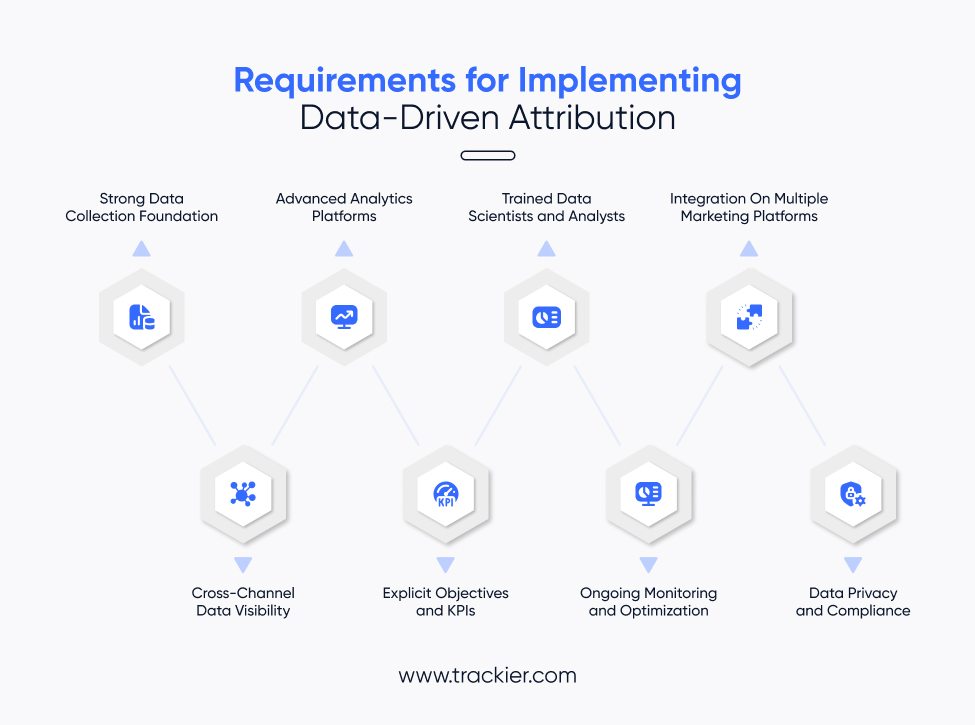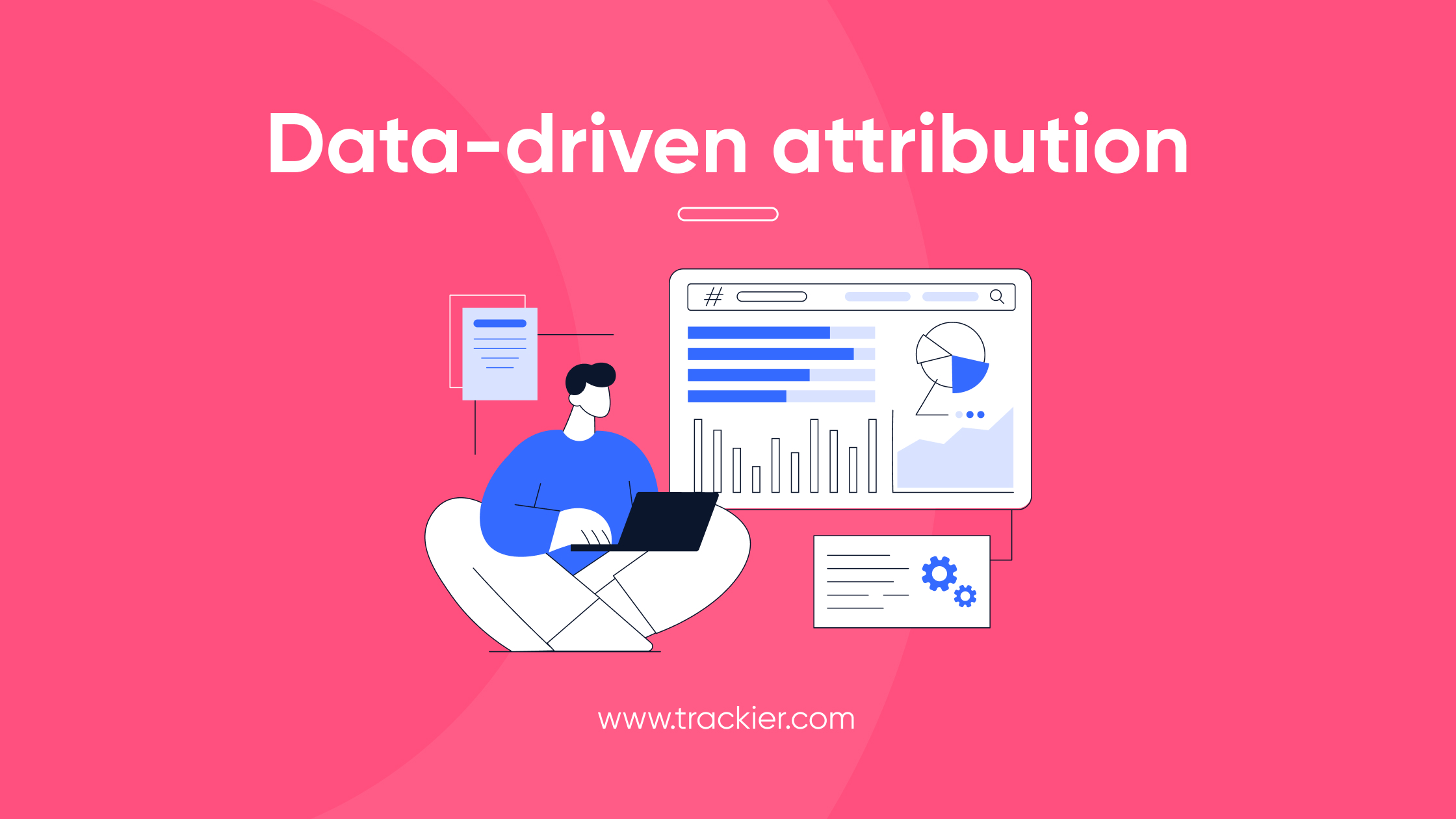Data-driven attribution (DDA) is an advanced way of observing how different touchpoints contribute to a conversion or intended customer action. Unlike traditional models, which attribute credit for conversions based on rules defined beforehand (e.g., first-click or last-click attribution), DDA uses real-time data and machine learning models to distribute credit among many touchpoints based on how they influence the customer journey. Through this more accurate and dynamic approach, marketers can enhance their strategies and make better resource allocations.
Advantages of Data-Driven Attribution (DDA)

Enhanced Attribution Accuracy:
Data-driven attribution is more precise in explaining the impact various touchpoints have on customer decision-making. Data-driven attribution also circumvents inherent biases found in classical attribution models by basing its outcomes on real user behavior and machine learning. DDA takes into consideration all the right touchpoints to present marketers with a clearer perspective of the efficacy of their marketing channels.
Maximized Spend Marketing:
With the capability to properly attribute value to every touchpoint, DDA enables marketers to spend as much as possible on their budgets. Marketers can spend more budget on effective channels and spend less budget on ineffective channels, generating maximum return on investment (ROI). Real-time optimization maximizes marketing dollars spent where they are most effective.
More In-Depth Customer Journey Insights:
Data-driven attribution offers a better understanding of the customer journey through the examination of every interaction at all touchpoints and channels. It allows marketers to see how every touchpoint together affects influencing conversions, thereby having deeper insights into customer preferences, behavior, and needs.
Real-Time Decision:
Making DDA implements real-time analytics and data for making continuous attributions to adjustment models. As a result, marketers are better able to make decisions in real time, which optimizes marketing campaigns in real time. While customer behavior shifts, DDA can adjust to follow new trends and patterns, thereby keeping marketing programs up-to-date and effective.
Removes Bias from Attribution:
Classic attribution models like last-click or first-click tend to overvalue specific touchpoints at the expense of others. DDA minimizes attribution bias through machine learning-based algorithms that measure the true impact of every touchpoint based on data, giving a more well-rounded and unprejudiced picture of customer interactions.
Enhanced Cross-Channel Performance:
As data-driven attribution examines several touchpoints from various channels (social media, search ads, email, and site visits), it gives a better understanding of the way channels are interconnected. The marketer can ascertain the correct combination of channels that will deliver maximum conversions and form cohesive strategies for cross-channel victory.
Enhanced Customer Segmentation and Personalization:
Data-driven attribution allows marketers to determine different customer segments depending on their interaction patterns. This allows for enhanced personalization of marketing, where each customer is given content, offers, and experiences that are tailored to their requirements. By understanding the behavior of different segments, marketers can tailor their campaigns to meet the unique needs and preferences of each segment.
Improved Campaign Performance:
With the knowledge of which touch points and channels are converting at the highest rates, marketers can refine their campaigns and concentrate on the tactics that deliver the highest performance. Due to this ongoing optimization, campaigns lead to improved performance, and marketing efforts prove to be more effective in the long run.
Functions of Data-Driven Attribution (DDA)

Data Integration and Collection:
Another of the main activities of DDA is integrating and collecting data from various sources. This involves monitoring customer interactions on websites, email campaigns, paid advertising, social media, and offline activities. Data from every touchpoint is combined into a single dataset, giving an overall picture of the customer journey.
Machine Learning Model:
Training DDA uses machine learning to learn patterns and associations in the data. Algorithms study customer interactions to identify which touchpoints are likely to drive conversions. These models get better as more data is processed, and attribution accuracy is improved over time.
Conversion Path Mapping:
DDA operates to chart out the conversion paths that consumers follow before taking a desired action, for example, making a purchase. By mapping out the chain of touchpoints, marketers know which stages in the customer process are most pivotal in generating conversions and accordingly align their strategies.
Cross-Channel Attribution:
Another of the main tasks of DDA is analyzing cross-channel interactions. By taking into account touchpoints in several channels—email, paid search, display advertising, and social media—DDA assists marketers in comprehending the way these channels interact. This allows for the development of an integrated marketing plan that can optimize the performance of each channel.
Attribution Credit Allocation:
Data-driven attribution allocates credit for conversions following the real influence of each touchpoint. The algorithm measures the contribution of each interaction and dynamically assigns credit, taking into account the actual role that each touchpoint plays in converting customers. This removes the rigidity of classical attribution models.
Dynamic and Adaptive Modeling:
DDA is ever-evolving to adjust to evolving customer behavior and marketing approaches. As more data is gathered, the machine learning model continuously updates itself so that attribution is always current and precise. This dynamic model enables marketers to make swift reactions to emerging market conditions and customer attitudes.
Performance Reporting and Analysis:
DDA offers reports with extensive insights into performance across multiple touchpoints and channels. With the help of such reports, marketers can comprehend the best-performing strategies for converting traffic, hence being able to make informed data-based decisions about spending, campaign plans, and efforts toward engaging with customers.
Requirements for Implementing Data-Driven Attribution (DDA)

Strong Data Collection Foundation:
To execute DDA, an organization requires a strong data collection framework. It includes the merging of analytics applications such as Google Analytics, CRM platforms, and other marketing hubs that can record customer interactions with multiple touchpoints. A single, seamless pipeline is required for gathering and uniting data across all touchpoints.
Advanced Analytics Platforms:
Data-driven attribution is also dependent on advanced analytics platforms and tools that are capable of handling large datasets and analyzing them. The marketers will require access to machine learning models, data visualization software, and other analytics tools to interpret the data and extract meaningful insights. Tools such as Google Attribution or machine learning models that are developed in-house are usually employed in DDA.
Trained Data Scientists and Analysts:
Due to the intricacy of DDA, companies require well-trained data scientists and analysts with the capability to construct, train, and interpret machine learning models. These individuals are tasked with setting and adjusting the algorithms to deliver precise attribution. In the absence of a robust data science team, it can be challenging to unlock the complete potential of data-driven attribution.
Integration On Multiple Marketing Platforms:
To successfully deploy DDA, data from many marketing platforms, such as email marketing tools, social media, pay-per-click advertising, and customer relationship management software, needs to be integrated. Through integration, the attribution model is provided with an overall picture of all the customer interactions, hence improved insights.
Cross-Channel Data Visibility:
Marketers must ensure that they can track cross-channel interactions in real time. This includes not just digital channels but also offline interactions where applicable (e.g., in-store visits). Tools that track cross-channel engagement and offer multi-touch tracking capabilities are necessary for implementing DDA successfully.
Explicit Objectives and KPIs:
Setting clear objectives and key performance indicators (KPIs) upfront for using DDA is significant. The goals aid in deciding upon what conversion, or behavior, is the most important by serving as guiding metrics for which the attribution model emphasizes the most appropriately relevant touch points. Failing to set up front will prevent attribution models from matching greater goals for overall marketing.
Ongoing Monitoring and Optimization:
DDA is informative, but it needs to be constantly monitored and optimized. Marketers must continually monitor the performance of attribution models, make changes, and verify that the model adapts to evolving consumer behavior and market conditions.
Data Privacy and Compliance:
Data collection and analysis for DDA must comply with data privacy laws such as GDPR, CCPA, and others. Organizations need to make sure they have effective consent management and that the usage of data is according to legal norms. Data privacy aspects are especially relevant when handling personal customer data.
Conclusion
Data-driven attribution is a more precise, richer, and dynamic measurement of marketing performance. With machine learning and real-time data, marketers can optimize their strategies, make more informed data-driven decisions, and better allocate their budgets. The advantages of DDA are obvious—more precise attribution, more effective marketing spend optimization, and greater customer insight—but to implement it effectively, the proper infrastructure, tools, skills, and ongoing monitoring are needed.
Read more about web-based multi-touch attribution tools for marketers here.
FAQs
What is data-driven attribution, and why is it important?
Data-driven attribution (DDA) uses machine learning to analyze how various touchpoints contribute to a conversion. Unlike traditional models, it distributes credit across the customer journey based on real performance data, enabling brands to understand and optimize which interactions truly drive results.
How does data-driven attribution differ from last-click or rule-based models?
Traditional models like last-click give all credit to the final interaction, whereas rule-based models (first-click, linear, time decay, position-based) tokenize attribution arbitrarily. DDA, however, assesses each touchpoint’s real impact using algorithms, offering a more accurate and holistic view of your marketing’s effectiveness.
What are the benefits of using data-driven attribution?
DDA delivers powerful advantages: more accurate ROI measurement, insights into the complete customer journey, optimized ad spend, and patterns of user behavior, ultimately empowering smarter, data-backed decisions that improve campaign performance.
What are the data requirements for implementing data-driven attribution in Google Ads and GA4?
In Google Ads, DDA typically requires at least 3,000 ad interactions and 300 conversions within 30 days. In GA4, requirements are much lower, making DDA more broadly accessible; previous restrictions tied to conversions or Google Analytics 360 have been removed.
How does data-driven attribution work in Google Ads and GA4?
In Google Ads, DDA analyzes all interactions, search, display, and YouTube, to assign fractional credit to each based on conversion likelihood. GA4 leverages machine learning with a broader, up to 90-day lookback window and includes time decay, offering dynamically evolving attribution insights.
Is adopting data-driven attribution worth it?
Absolutely. Google reports advertisers switching to DDA saw an average 6% increase in conversions, with case studies like Mercedes-Benz Germany achieving up to a 37% boost using DDA alongside Smart Bidding.
What limitations should marketers consider when using data-driven attribution?
Challenges include the “black box” nature of algorithms (less transparency), high data volume requirements, making it harder for small campaigns, and potential gaps in recognizing offline or non-ad interactions. Plus, ensuring strong data hygiene and privacy compliance is essential.



